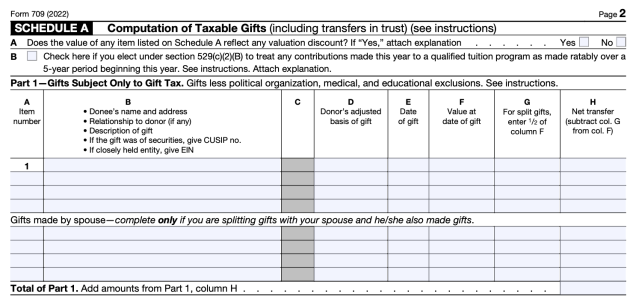What Counts Toward the Gift Tax?
Feb 09, 2024 By Susan Kelly
According to the Internal Revenue Service's definition, a gift may be almost anything of value given to another person or organization without expecting to receive something of equal or lower value in return. It does not need to be in the form of cold, hard cash either. This encompasses a wide variety of assets and forms of property. This includes a home, a vehicle, jewelry, and other valuable possessions. In addition, it consists of various accounts for one's finances, such as a portfolio of investments. The following are some more things that might be considered gifts:
- A sizable sum of money that you extended to another person with no interest
- Letting go of a significant portion of the debt that is owed to you
- Giving money that was originally intended for retirement as gifts
Despite this, the government provides you with space for maneuver. Giving money to any of the following people or organizations does not count as a taxable gift under any circumstances:
- Spouse of a citizen of the United States (if not, the ceiling is $175,000 for the tax year 2023)
- As a care provider, you may pay for the eligible medical expenditures of another person.
- Only tuition will be covered by the educational institution.
Therefore, you are free to make donations of any size to the aforementioned people and organizations during the year without being required to fill out Form 709 or pay a gift tax. However, even if you believe you have made many taxable gifts to others, you may not have to file Form 709 or pay the associated tax. This is due to the restrictions placed on the gift tax.
How to Fill Out Form 709
If you've determined that you must complete Form 709, the steps are included below for convenience.
To begin, fill out the section labeled "General Information" on the form's first page. On-Line 12, you will see a checkbox that enables you to indicate whether or not you and your spouse made any joint gifts during the tax year. In such a case, you may ignore lines 13 through 18 of the transcript. Take note that if you made any presents with your husband, both of you need to sign Form 709 in the proper places. However, each person would be responsible for filling out their paperwork.
Fill out the "Schedule A: Computation of Taxable Gifts" form to report the gifts. In this section, you would supply information such as a description of the present, the recipient of the gift, and the value of the gift at the time it was made.

You must disclose any transactions subject to gift tax and/or generation-skipping transfer tax if any of these taxes apply to the situation. In addition, you are required to declare any transactions that were made to trusts.
Fill out the sections under "Gifts From Prior Periods," "Deceased Spouseal Unused Exclusion Amount," and "Computation of Generation Skipping Transfer Tax" if any of them apply to you. These are called Schedule B, Schedule C, and Schedule D.
If you reported gifts on part two or part three of Schedule A, you must complete Schedule D.
Please complete Part Four of Schedule A, titled "Taxable Gift Reconciliation." In this section, you may provide any applicable deductions or exclusions.
Finish the third section, referred to as "Tax Computation." Form 709's very first page contains the information in question. To determine the amount of tax that must be paid on the reported present or gifts, please use the "Table for Computing Gift Tax" in the instructions section. You are eligible to use your lifetime gift and estate tax exemption, often referred to as the unified credit. If you qualify for this exemption, you won't have to worry about paying any taxes out of your pocket. However, in the future, it will lower the amount you can give away and transfer out of your estate without being subject to estate tax. After that, you should sign your name and date the form.
Bottom Line

You are not required to complete Form 709 unless you made a taxable gift to a person or organization valued at more than $17,000 in the previous year. But if you did, it's possible all you have to do is report the gift. You won't have to worry about paying tax out of your cash until you've exceeded your lifetime gift and estate tax exemption. This is now estimated to be $12.92 million for the tax year 2023. But with the assistance of a financial expert, a married couple may transfer roughly twice as much money without incurring additional taxes.








